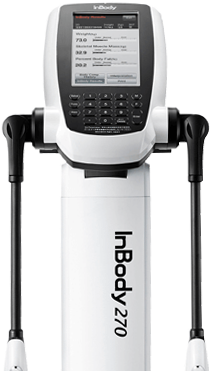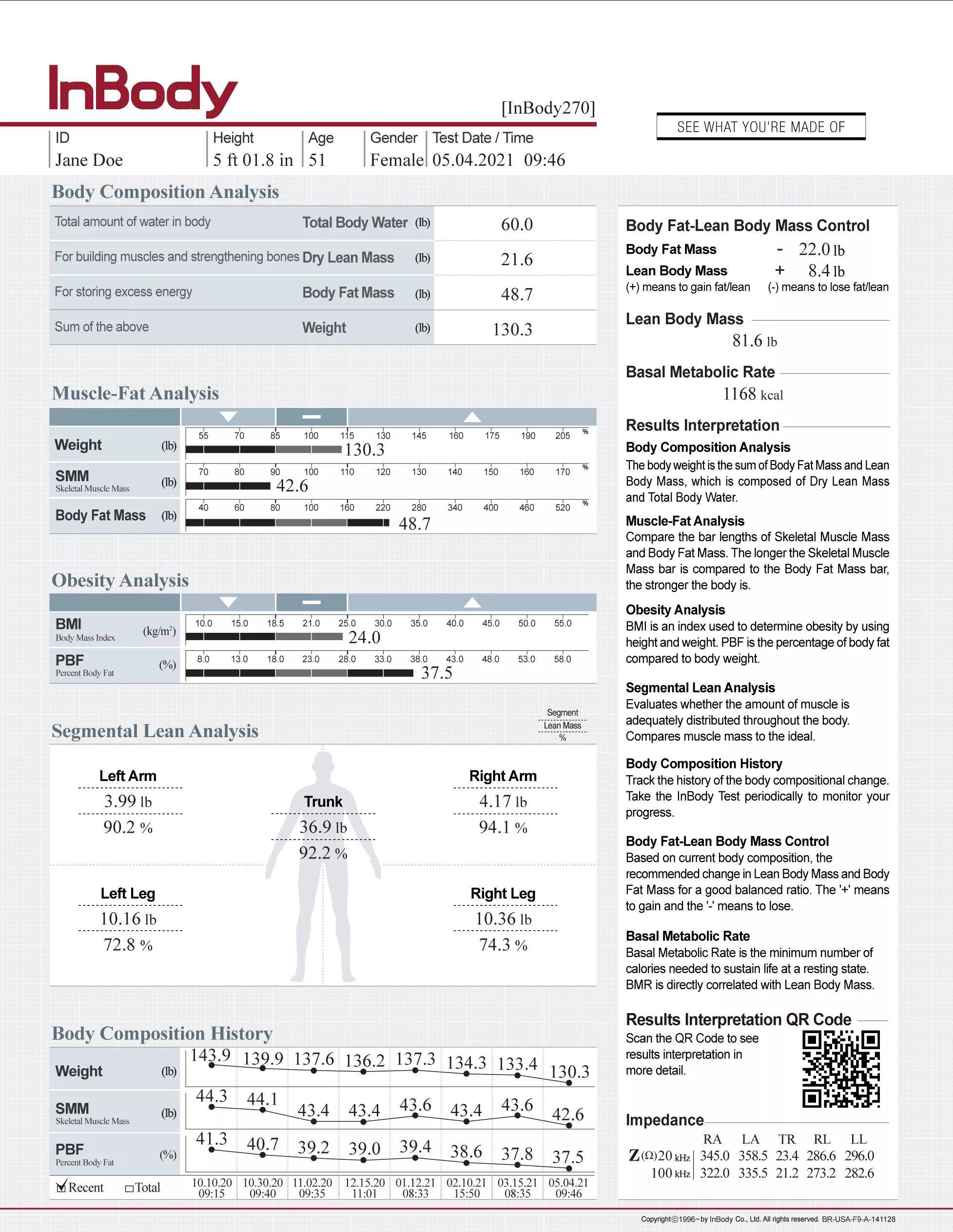Body Composition Analysis sits at the top of the InBody 270 Result Sheet because it provides an excellent overview of your body composition.
This section breaks down your Weight as a sum of Total Body Water, Dry Lean Mass, and Body Fat Mass. At the top, Total Body Water shows how much water comprises your weight. Right below is your Dry Lean Mass. This value is the weight of the protein and mineral content in your body.
WHY THIS MATTERS
Because protein makes up most of your muscle, and Dry Lean Mass excludes body water, if your Dry Lean Mass increases, then this is generally a sign that you have gained muscle mass!
Below Dry Lean Mass is Body Fat Mass. This value reveals how much body fat, both surface level (subcutaneous) and internal (visceral), makes up your weight.
Lean Body Mass (LBM) is the sum of your Total Body Water and Dry Lean Mass. LBM is the weight of everything in your body except fat; for this reason, it is also called Fat-Free Mass. Lean Body Mass includes muscle, water, bones, and organs.




